An address book’s main user interface consists of five tabs: Name, Phone, Address, Email, and Birthday. Each tab contains a list of contacts with specific information about them. While a simple book can be created and maintained using essential word processing tools like Microsoft Excel, this application is often better since it can organize contacts into groups and subgroups.
In addition, it is popular because it allows you to store contacts, information, and locations in a single document. Although Google offers free online services for storing and synchronizing your contacts, you can always use it to keep your contact information.
Address books are often used to store information about personal contacts, but they can also be used for business purposes. Many businesses keep it with the contact information for their clients and customers. It also stores social media profiles that allow one to keep important information recorded.
This article discusses all the essential information, including:
- What an address book and template is
- The advantages of using it
- Types
- The elements to include
- How to create it using excel
- Important things to remember when crafting it
What Address Book and Its Template Is?
An address book records the contact information of individuals, businesses, and organizations.
It includes names, phone numbers, email addresses, and other pertinent information. It can be either digital or physical. A digital book is typically stored on a computer or other electronic device and can be synced with other devices like smartphones. A physical book is a paperback or hardcover book that people use to store contact information.
You can create it from scratch or by using a template. However, creating the book from scratch can be challenging and time-consuming. On the other hand, using a template is more efficient for saving all your contacts in one place. A template can help ensure that all the necessary information is included.
Also, using a template is much easier than creating one from scratch. You can also use a template to keep track of birthdays, anniversaries, and other special occasions. The primary purpose of a template is to make your job easier and reduce any chance of errors in formatting or content. This website has free, downloadable, and customizable templates that you can use for convenience.
Templates



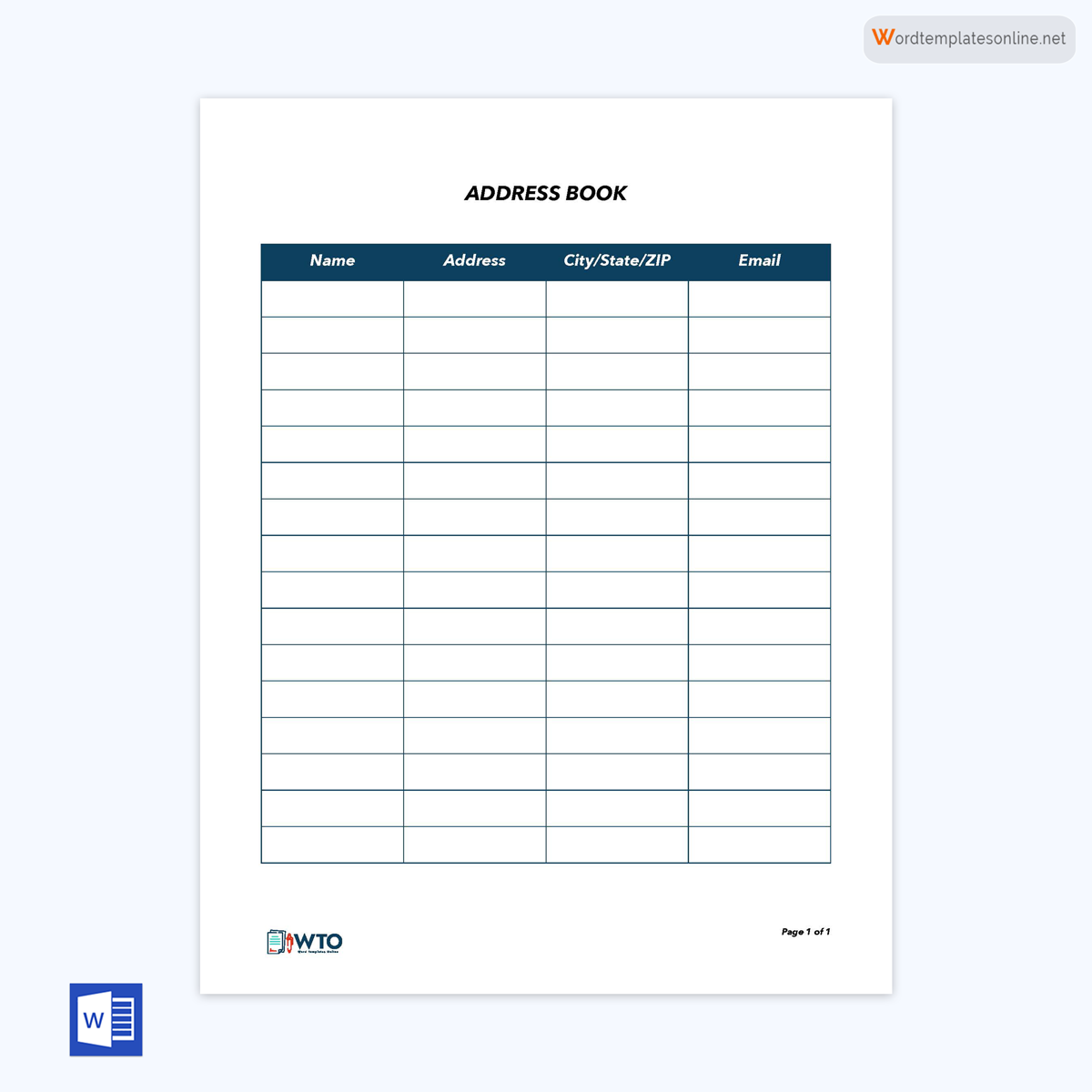
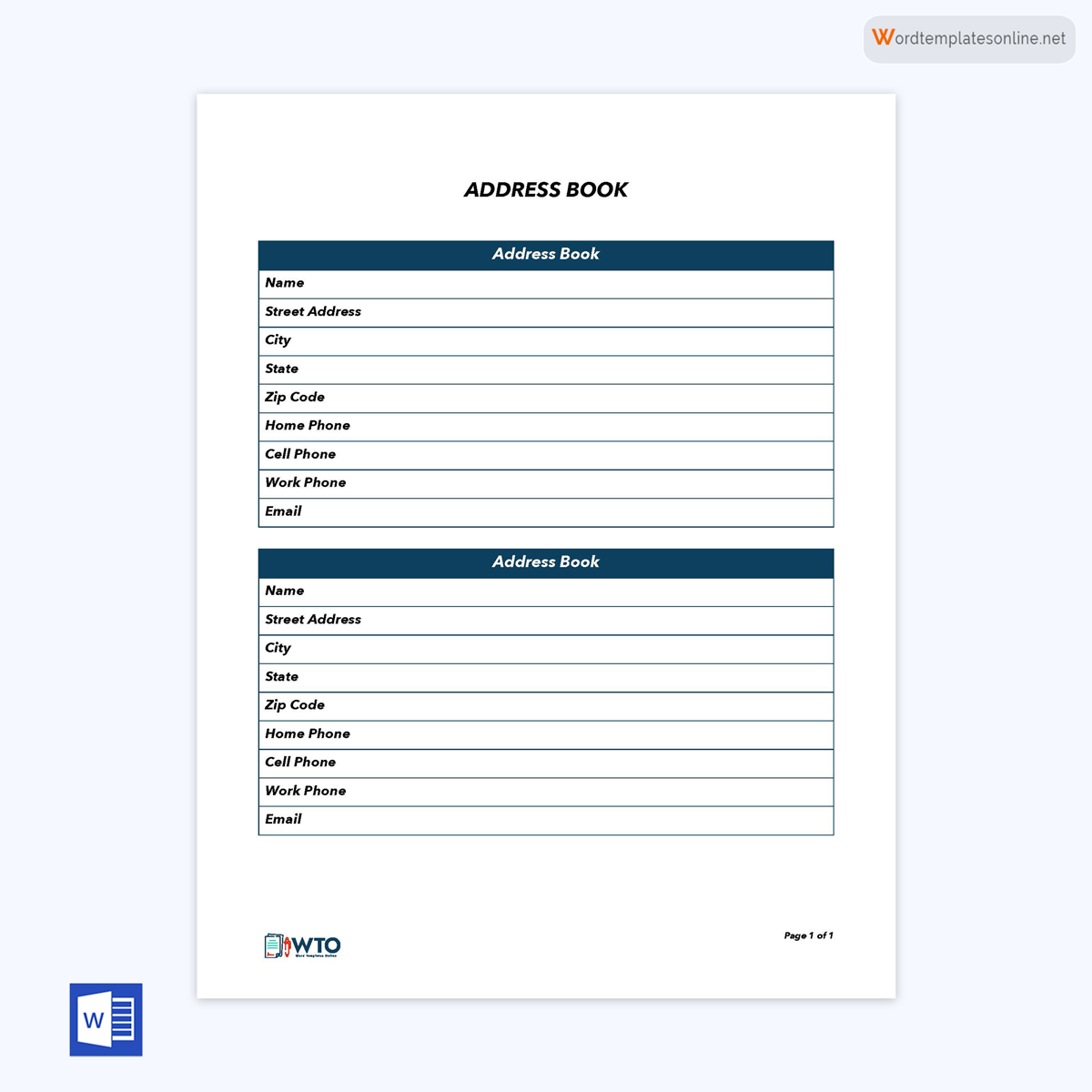
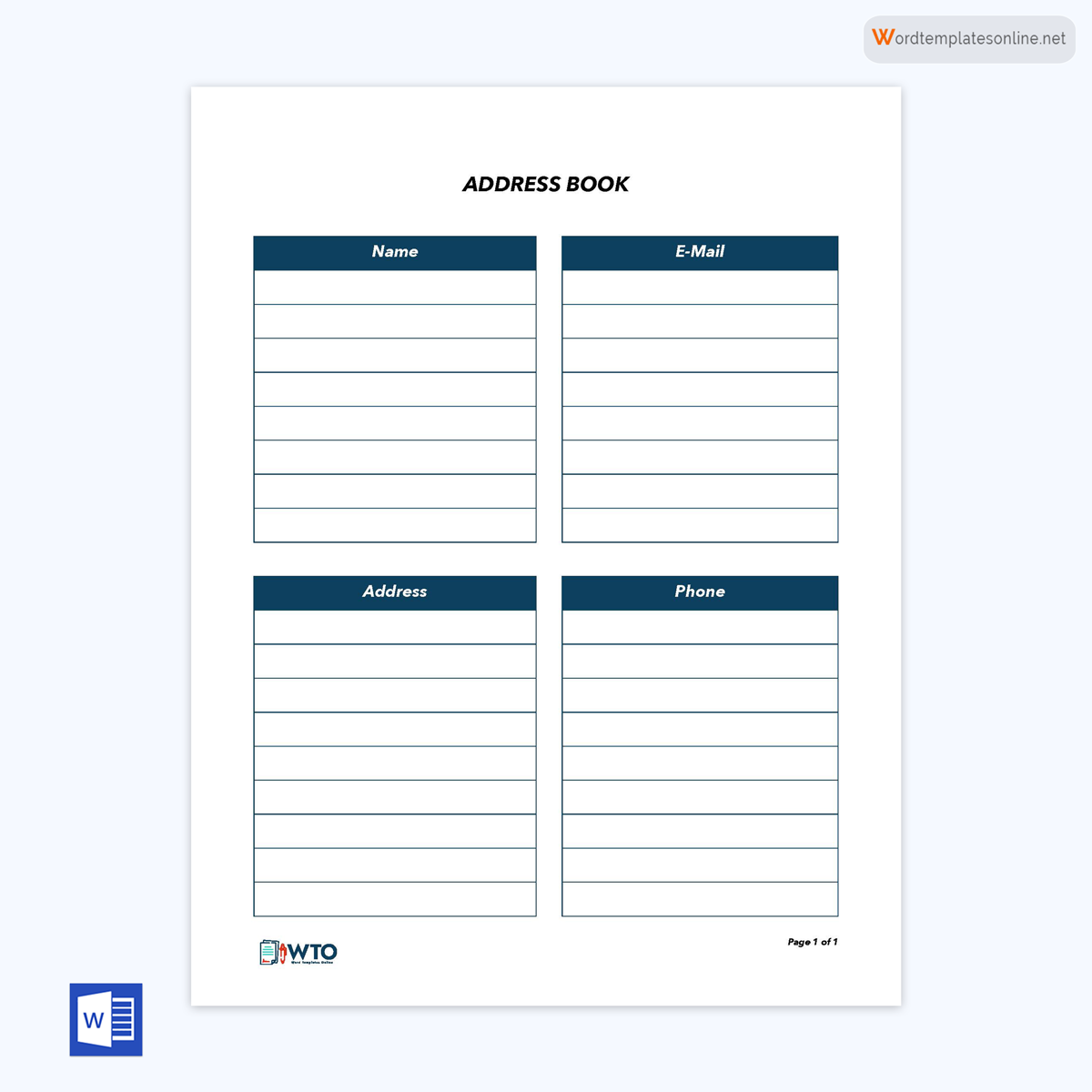
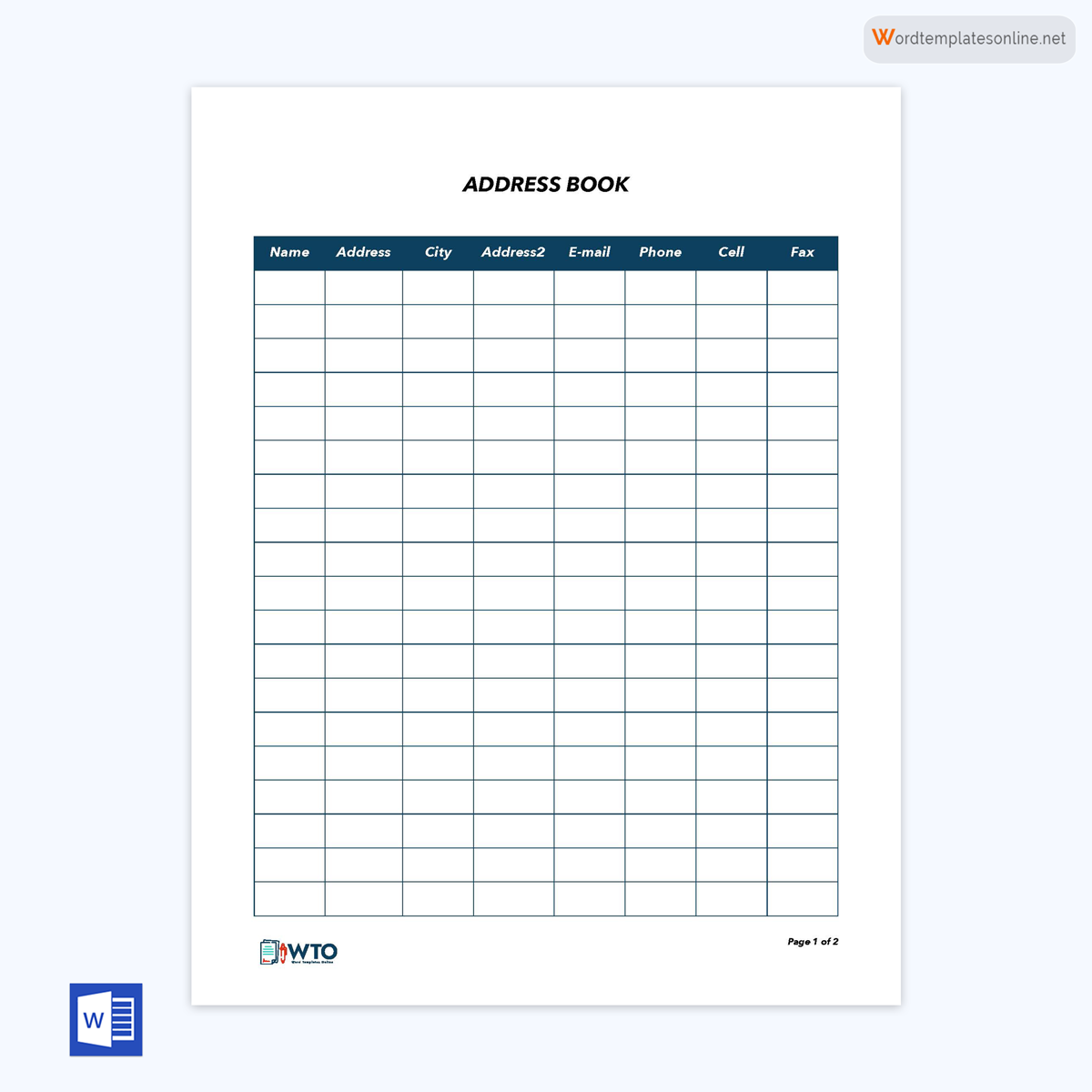
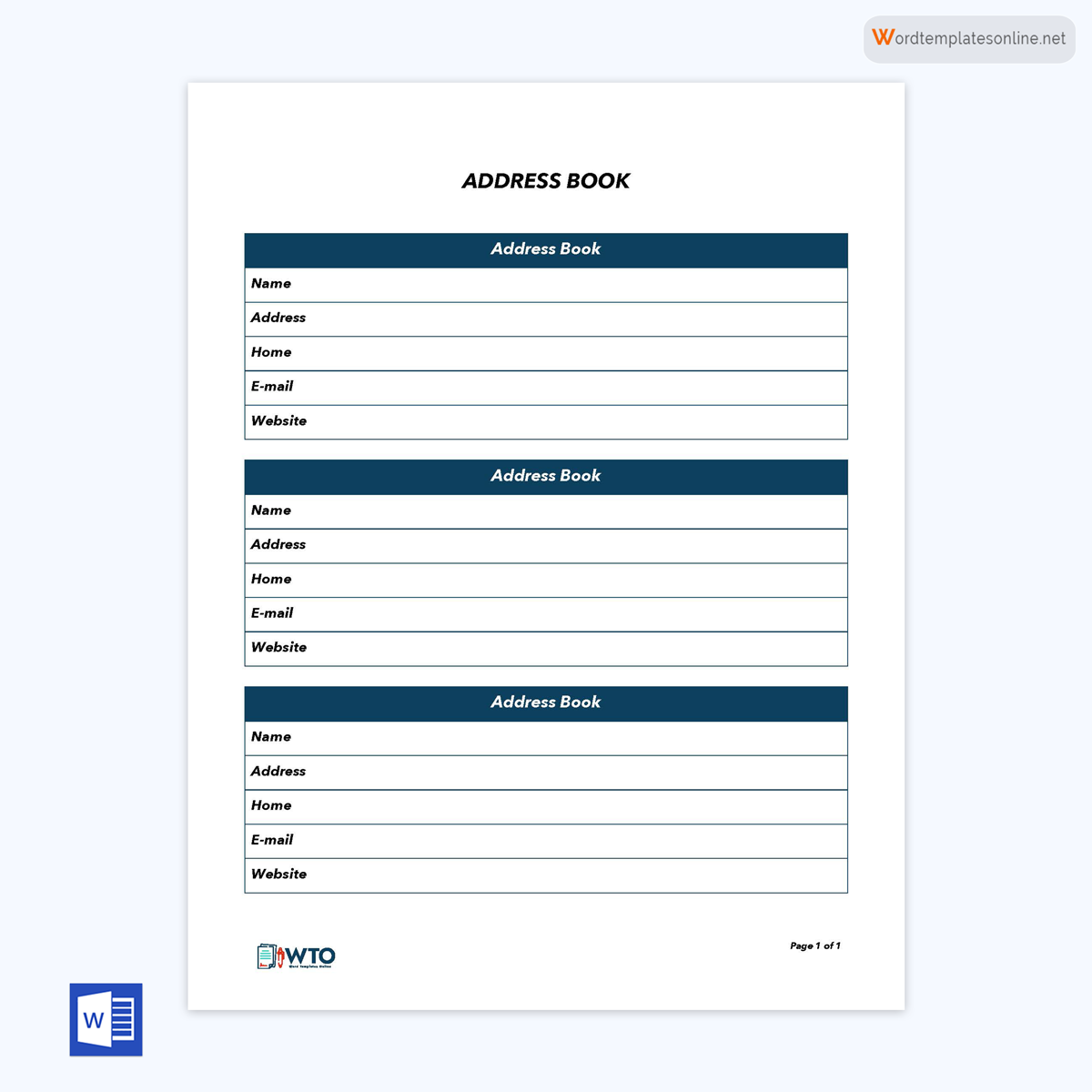
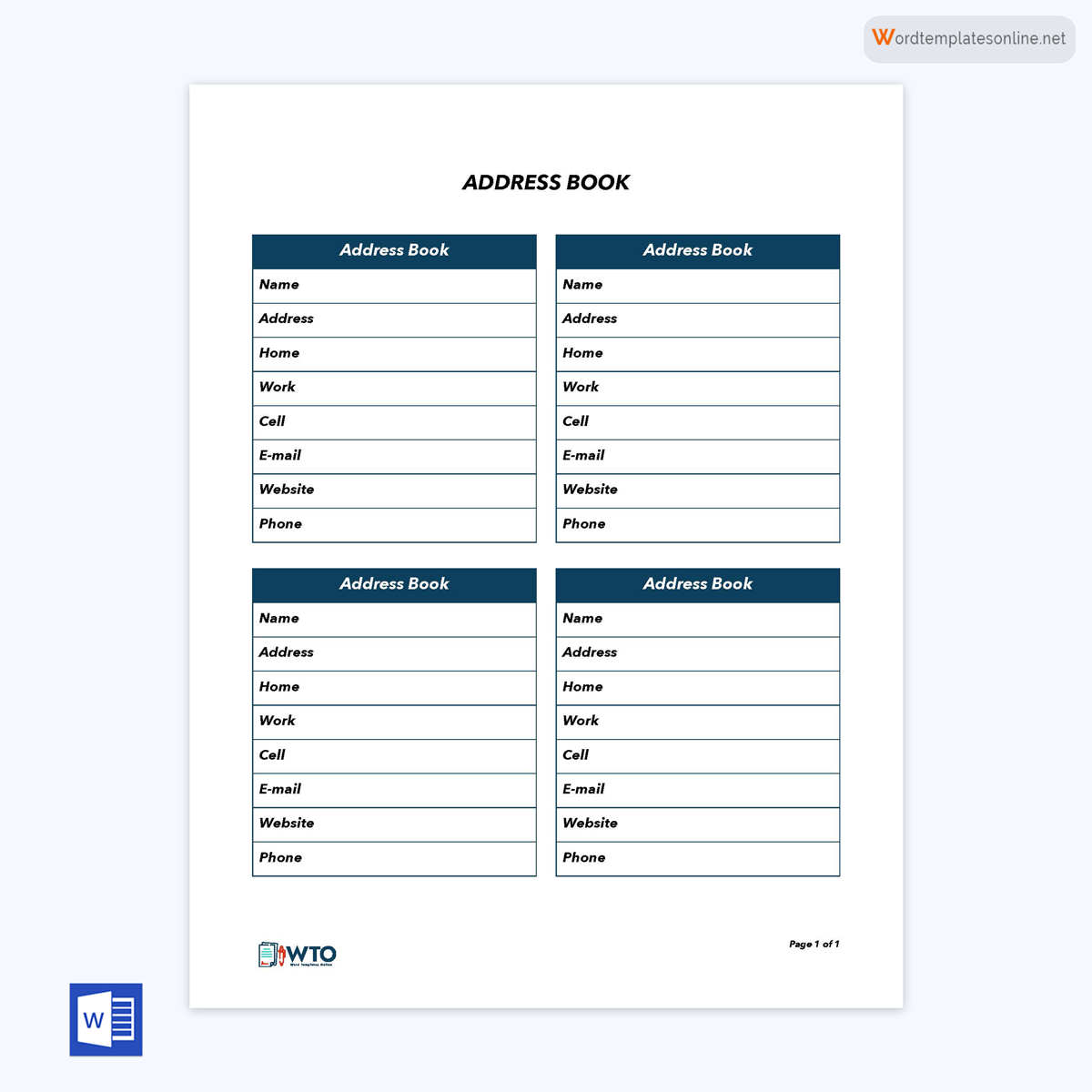
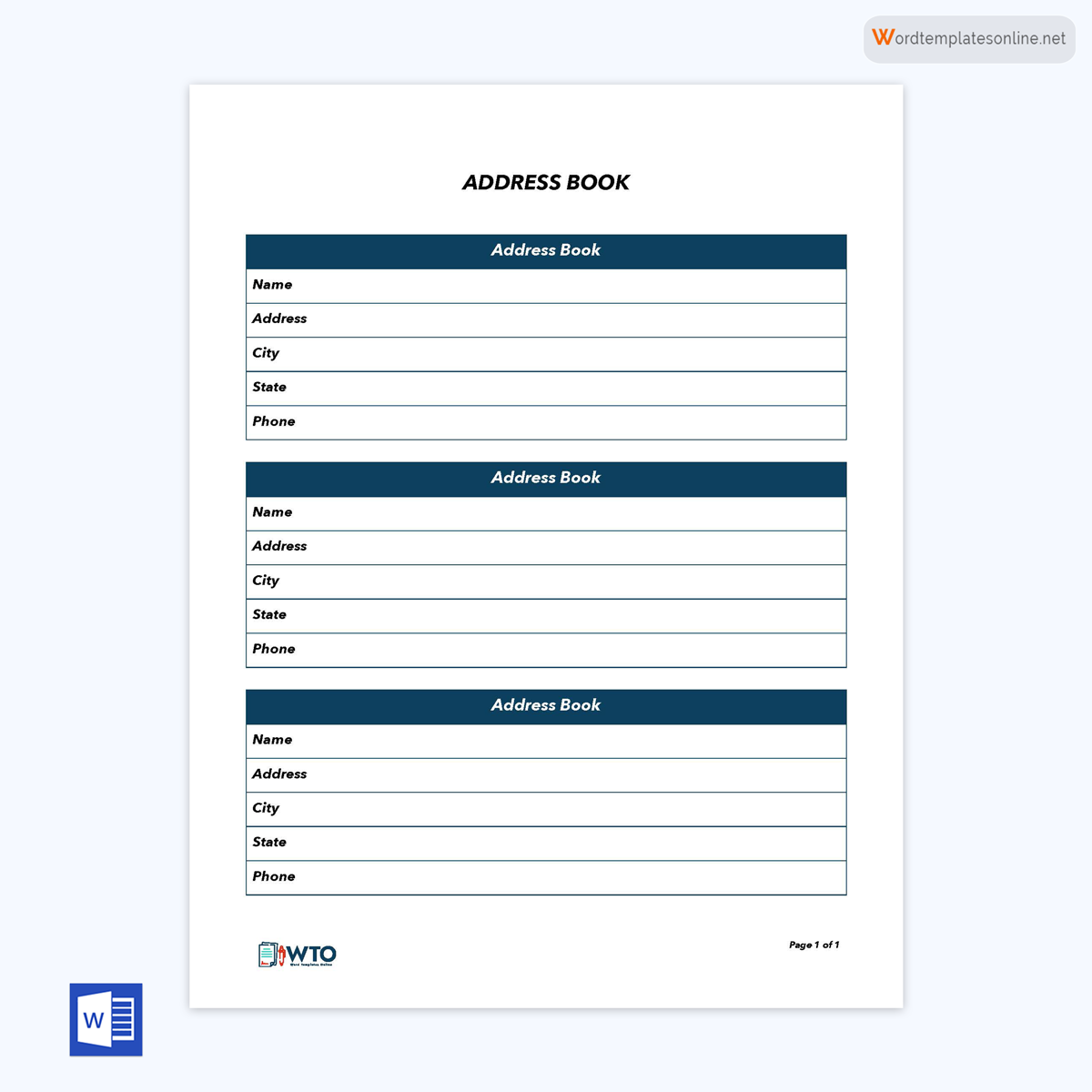
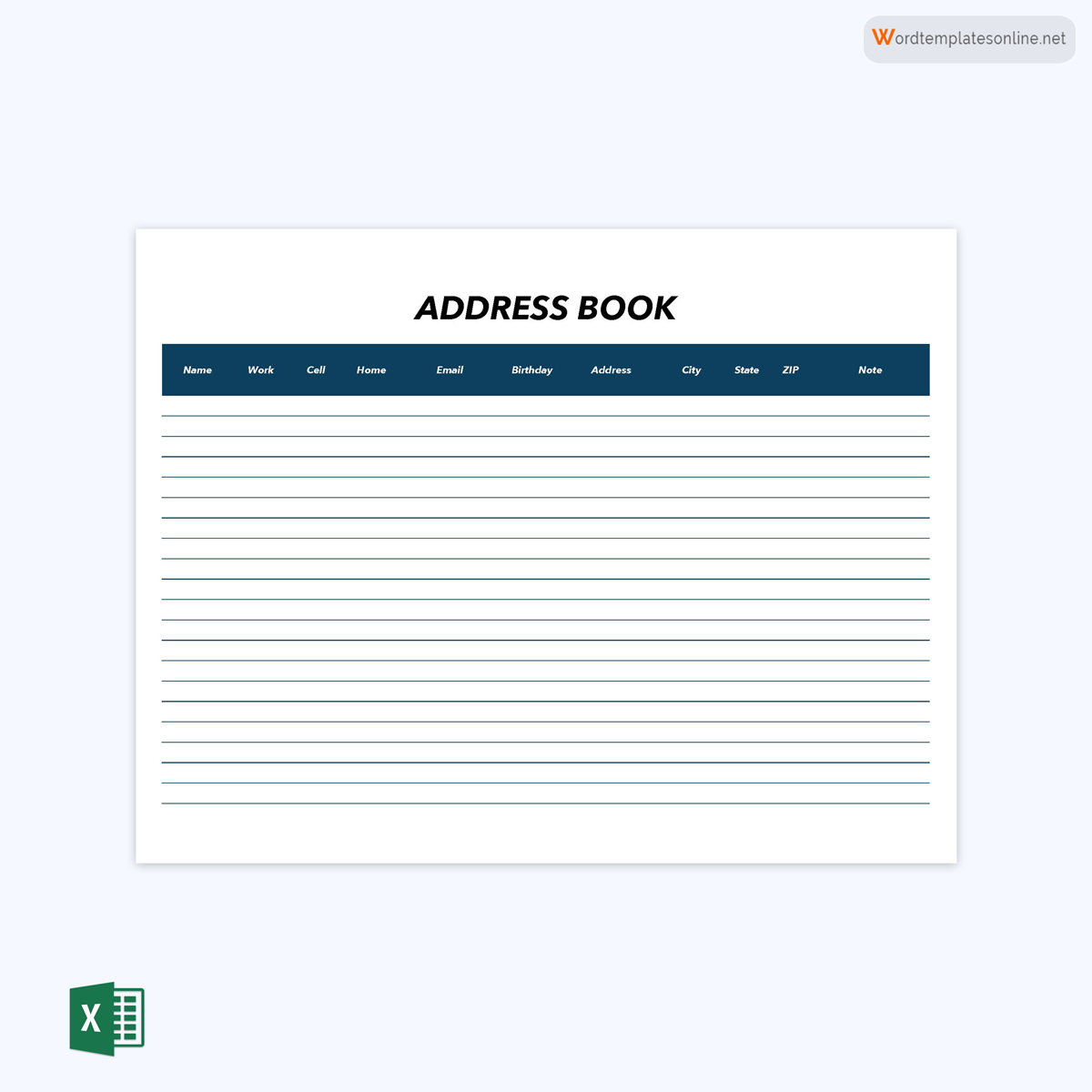
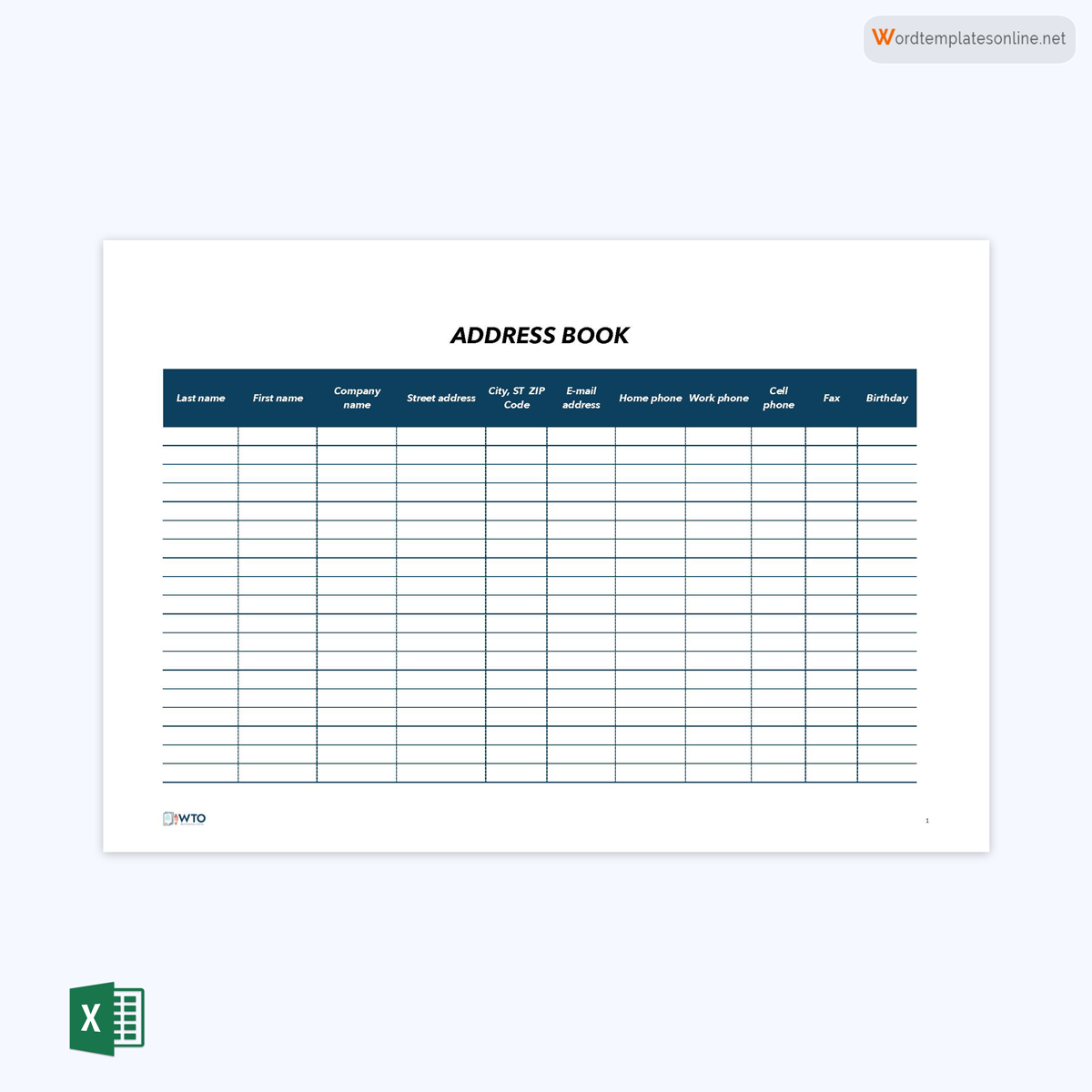
Advantages
There are various benefits of using this book. Some of the advantages are explained below:
It saves time and space
The most significant advantage is that it reduces users’ time looking for contact information. This is because all their contact information is in a single place. Users can also specify the order in which they want their contacts to appear, eliminating the need to scroll through many pages whenever they want to check on a contact.
Stores all contacts
An address book is a great way to track who a user wants to contact or follow up with. Users can also use it to keep track of their business network. Additionally, an online-based book allows people to store many contacts in one place for easy access
Works as a backup
Nowadays, people have smartphones with digital address books and can access contacts easily. Additionally, using a digital book is a great way to keep a person’s contact information backed up. This is because people can add as many contacts as they like, and they will be securely stored. Therefore, if one loses their phone, their contacts can be retrieved.
It is editable
Another advantage is the ability to edit contacts. Users can easily change or add information about their contacts. Besides, they can delete or remove some contacts from the book at any time.
Types of Address Books
There are various types, each with its purpose and use. The most common type is the personal address book, which stores the contact information of friends, family, and other personal acquaintances.
Below are the five types:
Business address book
Some people use a book for business purposes, usually to create a list of the contact information of the company employees. Businesses also use it to record details of the clients they are in contact with. These contain all their client’s and business partners’ names, email addresses, and mobile numbers.
Personal address book
A personal book, sometimes referred to as a private or personal contact list, is a collection of information that an individual may keep to record their friends, family, and associates’ contact information. Individuals use it to keep their contact information private and secure.
Project address book
Project managers in large corporations commonly use a project book to save the information of other people involved in the project, such as stakeholders, subcontractors, etc. This helps them to know the teams they are managing and working with. It is also helpful for other members outside of management as it helps them understand who is involved in their project, which can help eliminate communication issues.
Emergency address book
This book is a collection of names and contact information of people who should be notified in an emergency. This could include family members, close friends, co-workers, or anyone else the user would want to be notified if something unexpected happened.
Employee address book
This is a great way to keep track of employees. One can add the employees’ names, emails, phone numbers, and home addresses. This book provides a way to keep track of employees using their contact information.
Which Elements are Included?
When creating or using the book, a person needs to know the elements that must be included. This will help them create a practical one.
The following are the elements that must be included:
- Name
- Address
- Work contact number
- Cell number
- Home contact number
- Email address
How to Create It Using Excel
Creating this book using Microsoft Excel is easy. Below are guidelines to follow when creating it using excel:
- Start by opening Microsoft Excel.
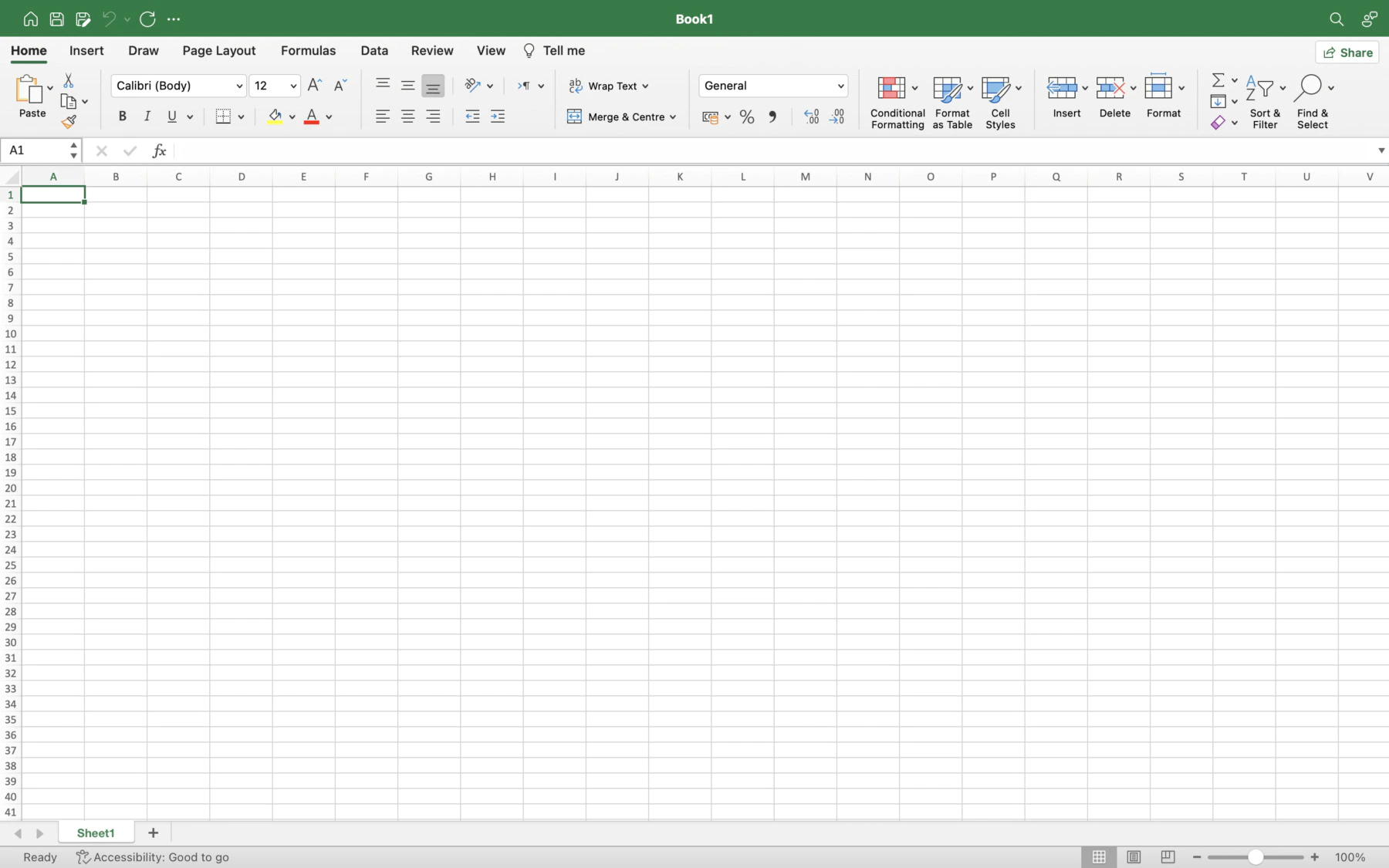
- Next, create a header. Double-click the tab at the bottom of the sheet labeled ‘sheet 1’ and type ‘contact list’ as your header

- After writing the header, create address column headings describing the information. The columns follow an order, i.e., A1, B1, C1, D1, etc., depending on the number of columns you will use.

- On the A1 cell, type the heading, which is “name.”

- For the second column, click on the B1 cell and type “phone number” as the heading.
- The next column is C1. On the C1 column, input “email address” as the heading.
- Next, click on the D1 cell and write “address” as the heading.
- In the next column, cell E1, write “workplace” as the heading. Use this column to add a person’s workplace.
- The next column is cell F1 with the heading “other.” The “other” column is used when you want to add some additional contact information. For example, a nickname.

- Lastly, save all the information above by clicking on the “file” tab on the menu and clicking “save as.” Next, type the name of the file you have created and press “ok.”

note
You can create more cells to save more details about a particular contact.
Things to Consider
It is used by individuals who have a busy schedule and need an effective way to store their contacts. It is also helpful for managers and business owners, who typically use it to manage their employees.
Below are the things to consider to ensure you create one that will store contacts effectively:
Sync all the information
The best way to keep a digital book up-to-date is to sync all information to different devices on a central location, such as a google account. This ensures that it will always have the most up-to-date information. One popular way to sync an address book is through a cloud-based service such as iCloud or Google Drive.
Organize your address book
Organizing it is a simple way to keep the information you need to remember organized. This can be done using headings such as name, email, phone number, etc. You must write the headings in separate columns for easier access.
Enter all contact details
To get started, enter all the contact information for the people you want. You must include as much information as possible. To add an individual’s contact information in it, at least their name and phone number are required. You can also include email addresses, mailing addresses, and notes about each person.
Backup all your contact details
There are various ways to back it up. One way is to send the book as a file to your computer via Bluetooth or USB cable. Afterward, save that file on an external device, for example, an external hard drive. Another way is to use a cloud-based storage service, such as Dropbox or Google Drive, to store your file.
Record important dates to remember
Everyone has important dates that they need to remember. Whether it is a birthday, anniversary, or just a particular day, everyone wants to remember it. It can help people keep track of those important dates.
EXAMPLE
A business manager may use their address book to track when their employees are retiring to determine how they can plan a replacement before it becomes an issue.
Wrapping Up
An address book contains the names and addresses of people an individual knows. It can be beneficial when one needs to send someone a letter or an email. If you do not have a book, you can easily create one using Microsoft Excel on your computer.
Whether an individual uses a physical book or an electronic one, they should regularly update it so that their information is always accurate. There are different ways to keep track of contacts, but it is still one of the most popular options. It is a simple and effective way to store addresses and keep track of important dates such as birthdays and anniversaries. With this helpful guide, you can create an effective address book to keep track of all your important contacts, making it easy to stay organized and connected.




